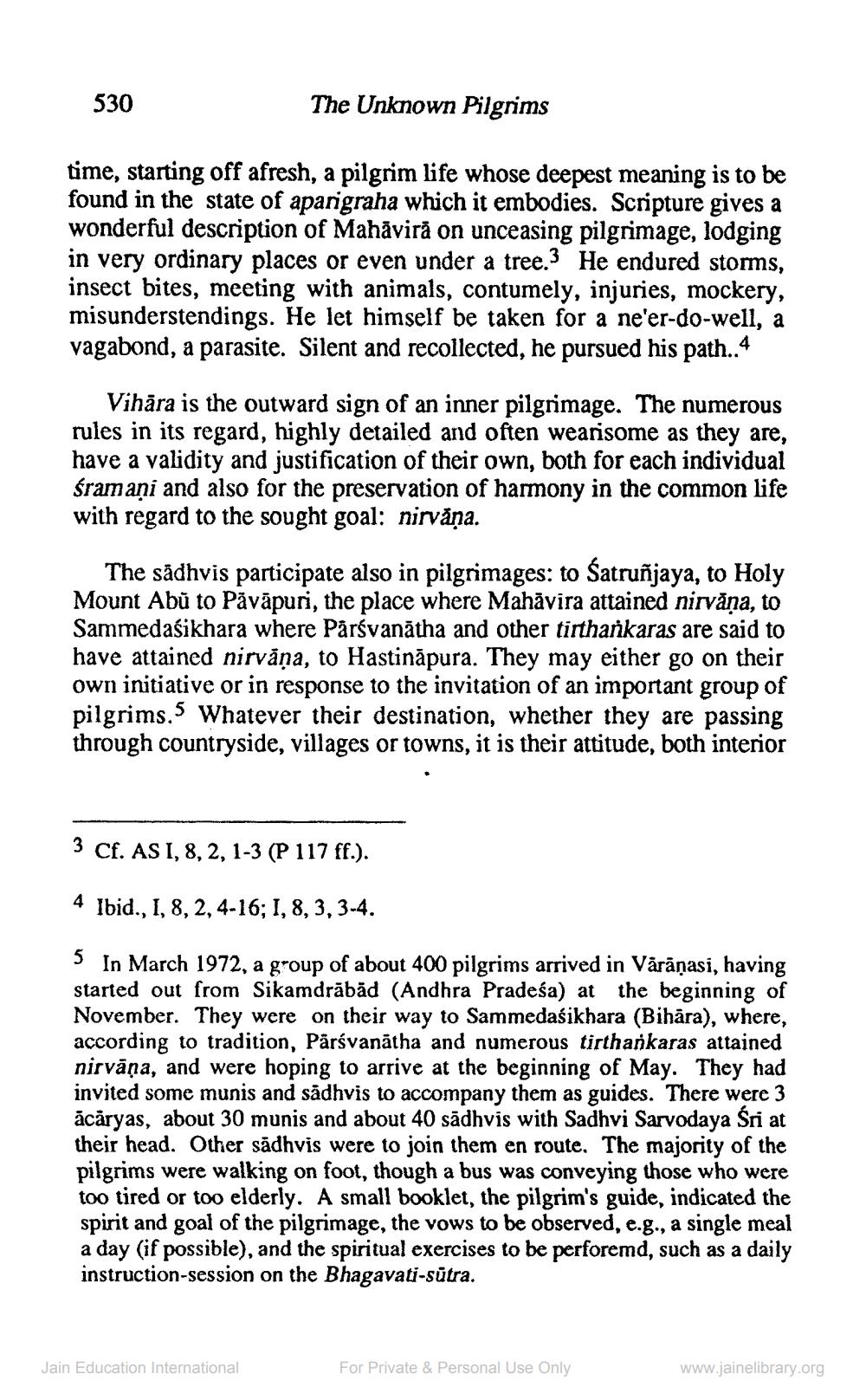________________
530
The Unknown Pilgrims
time, starting off afresh, a pilgrim life whose deepest meaning is to be found in the state of aparigraha which it embodies. Scripture gives a wonderful description of Mahāvirä on unceasing pilgrimage, lodging in very ordinary places or even under a tree. He endured storms, insect bites, meeting with animals, contumely, injuries, mockery, misunderstendings. He let himself be taken for a ne'er-do-well, a vagabond, a parasite. Silent and recollected, he pursued his path..4
Vihara is the outward sign of an inner pilgrimage. The numerous rules in its regard, highly detailed and often wearisome as they are, have a validity and justification of their own, both for each individual śramani and also for the preservation of harmony in the common life with regard to the sought goal: nirvana.
The sådhvis participate also in pilgrimages: to Satruñjaya, to Holy Mount Abů to Pāvāpuri, the place where Mahāvira attained nirvana, to Sammedaśikhara where Pārsvanātha and other tirthařkaras are said to have attained nirvāṇa, to Hastināpura. They may either go on their own initiative or in response to the invitation of an important group of pilgrims. 5 Whatever their destination, whether they are passing through countryside, villages or towns, it is their attitude, both interior
3 Cf. AS I, 8, 2, 1-3 (P 117 ff.).
4 Ibid., 1, 8, 2, 4-16; 1, 8, 3, 3-4.
3 In March 1972, a group of about 400 pilgrims arrived in Vārāṇasi, having started out from Sikamdrābād (Andhra Pradeśa) at the beginning of November. They were on their way to Sammedaśikhara (Bihāra), where, according to tradition, Pärśvanātha and numerous tirthankaras attained nirvāṇa, and were hoping to arrive at the beginning of May. They had invited some munis and sadhvis to accompany them as guides. There were 3 acaryas, about 30 munis and about 40 sādhvis with Sadhvi Sarvodaya Śri at their head. Other sādhvis were to join them en route. The majority of the pilgrims were walking on foot, though a bus was conveying those who were too tired or too elderly. A small booklet, the pilgrim's guide, indicated the spirit and goal of the pilgrimage, the vows to be observed, e.g., a single meal a day (if possible), and the spiritual exercises to be perforemd, such as a daily instruction-session on the Bhagavati-sutra.
Jain Education International
For Private & Personal Use Only
www.jainelibrary.org




